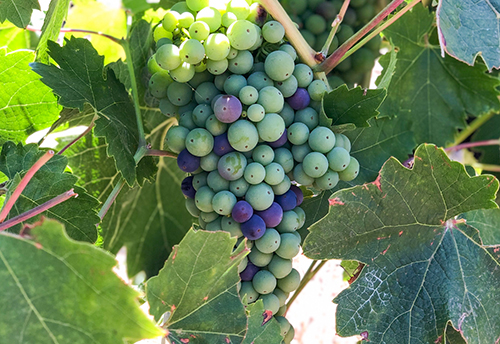Wine grapes are the key element to producing a fine bottle of wine. In most cases, the origin of wine grapes can be traced to France, considered by most wine experts to be the ancestral home to wine. The key to our wine program is matching the right grape to the correct vineyard site to achieve balance and full ripeness throughout the growing season.
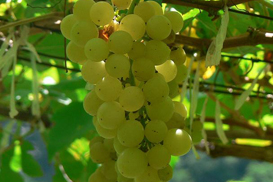
Chenin Blanc
Chenin Blanc is a white grape that is commonly grown in the Loire Valley of France (Vouvray), South Africa and California. It produces white wines that are fragrant and high in acid. Chenin Blanc can make wines that range in style from dry to very sweet depending on decisions made by the winemaker. Because of the high acidity in wines made from Chenin Blanc, they tend to age well. In Saumur, France Chenin Blanc is used to make sparkling wines of notable quality.
Chenin Blanc is known elsewhere as Pineau de la Loire. It is the most planted grape in South Africa where its local name is Steen. Chenin Blanc is a high volume producer so the wines it produces tend to be fairly inexpensive.
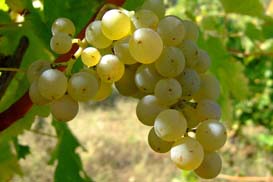
Sauvignon Blanc
Sauvignon Blanc produces some of the world’s most diverse wines and can be highly influenced based on growing conditions, barrel programs and winemaker discretion. Its ancestral home is in the Loire Valley and Bordeaux regions of France where the growing conditions are varied and the resulting wines are regionally distinctive. Sauvignon Blanc can tolerate more heat than many varieties and can also generate deep flavor profiles in cooler regions. The versatile nature of the grape makes it one of the more dynamic wine grapes to grow. Depending on where it is grown, Sauvignon Blancs can have higher acids and exhibit citrus, melon and tropical fruit characters in the aromatics and flavors.
If grown in a cool climate, it can develop an herbal (grassy) character in its aromas. Regions such as the Russian River Valley in Sonoma County certainly produce Sauvignon Blanc grapes that fit this profile. Sauvignon Blanc can produce a large crop and performs well in warmer regions such as the Dry Creek Valley. Because it can get overpowered by oak flavors, it is not often aged in wood. However, it is not unusual to find Sauvignon Blancs with some neutral oak aging. This ultimately comes down to an individual winery and their desired house style. At Dry Creek Vineyard, for example, we choose not to oak age any of our Sauvignon Blancs, instead preserving the fresh fruit characters we’ve come to love in the varietal.
Sauvignon Blanc can often blend with other varietals. Semillon is a classic contributor rounding out the taste of the wine. Sauvignon Blanc has become one of America’s most popular white wines. The variety of styles and flavors make it enjoyable for almost any wine drinker. When served chilled and with fresh oysters, Sauvignon Blanc creates a blissful pairing that is unmatched.
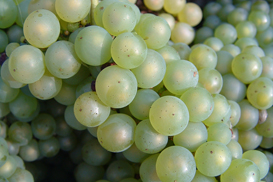
Chardonnay
The Chardonnay grape variety is a classic white wine grape grown all around the world. The original fame of Chardonnay comes from its success in the Burgundy and Champagne regions of France. White Burgundy must be made from the Chardonnay grape unless the label indicates it was made from a much less well-known grape, Aligoté.
Chardonnay takes oak well, and many higher priced Chardonnays are typically fermented and/or aged in oak barrels. When Chardonnay is aged in oak barrels, it may pick up vanilla overtones in its aromas and flavor.
Chardonnay also ages well in the bottle, though it will not age as long as many red wines. It likes slightly cooler climates (warm days/cool nights) and develops less acidity than Sauvignon Blanc. Some producers put their Chardonnay (or some of it) through malolactic fermentation, which reduces crispness and brings out a rich, buttery taste. This usually shortens the life of the wine as far as aging is concerned.
Wines made from the Chardonnay grape are usually served chilled. Chardonnay matches very well with chicken and with dishes that are served with a lot of butter or a cream sauce. Most Chardonnays lack the acid to match as well with seafood as Sauvignon Blanc or Riesling.
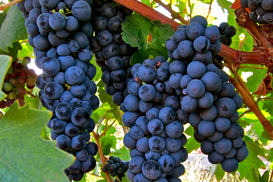
Zinfandel
It could be argued that Zinfandel is the state grape of California. Perhaps more than any other varietal, Zinfandel has found its footing in the fertile and well drained soils of the Golden State. The origins of the Zinfandel grape are quite fascinating. Through DNA fingerprinting, it was revealed that Zinfandel is genetically equivalent to the Primativo variety traditionally grown in Puglia (the “heel” of Italy), where it was introduced in the 18th century, as well as to the Croatian grapes Crljenak Kaštelanski and Tribidrag. Zinfandel then found its way to the United States in the mid-19th century and today represents more than 10 percent of all vineyards planted in California.
Early on, it was a popular variety with home winemakers during the American Prohibition. Then, in the late 1970s and early 1980s, the varietal experienced a renaissance in California. David Stare, among others, began to produce distinctly nuanced Zinfandel that spoke to specific vineyard sites. The wines became widely popular with fruit-forward flavors and spicy overtones. Zinfandel has experienced its share of ups and downs. The advent of White Zinfandel, while turning more people into wine drinkers, certainly took some of the credibility away from the grape. In recent years, Zinfandel has enjoyed a renewed energy with many young, talented winemakers joining the ranks and producing world-class Zins.
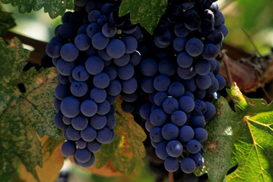
Merlot
Merlot is able to mature in regions that are cooler than those required for Cabernet Sauvignon. Merlot is more susceptible to fungus and mold diseases and therefore a bit harder to grow. Merlot varies widely in quality around the world depending on location and producer. This variety was first known for its success in the Saint Emilion and Pomerol areas of Bordeaux.
Merlot usually has ripe berry components in the bouquet. Its wines tend to be soft, fruity and smooth in texture. Select Merlots can have long aging potential but most are ready to consume in 4 to 8 years. It is usually bottled in a Bordeaux (high shouldered) bottle. Merlot is enjoying a surge in popularity and additional acreage is being planted in many major-producing regions. It came to California in the mid-1860s and has become one of the most popular wines since its surge in popularity in the 1990s.
Merlot should be served slightly below room temperature. When alcohol reaches 74˚F, it is likely to cause an unpleasant sharpness in the taste. Cooling the bottle for 15 or 20 minutes (but not much longer) in a refrigerator can be a good way to reach the desired serving temperature.
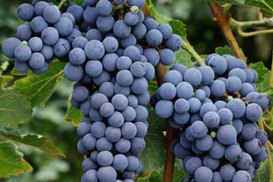
Cabernet Sauvignon
Cabernet Sauvignon is the premier red wine grape in the world. Cabernet Sauvignon is the dominant grape in the Bordeaux region of France and has spread to every major growing region. The Cabernet Sauvignon grape produces distinctive wines that are tannic and can have long aging potential. Average aging potential for Cabernet is 5 to 10 years in order to achieve peak flavor. It is usually blended with other varieties to increase wine complexity.
Cabernet Sauvignon is a small, dark, thick-skinned grape that gives average yields. It needs slightly warmer growing conditions than many other varieties in order to achieve maturity. DNA testing shows that it is descended from Cabernet Franc and Sauvignon Blanc. Cabernet Sauvignon taste characteristics are often dark cherry, cedar, tobacco or black currant, and cool climate growth can give green pepper or olive. Up to 18 months of aging in small oak barrels before bottling Cabernet is common in order to achieve more complexity.
When you think of the finest red wines in the world, you often are thinking of wines made with Cabernet Sauvignon. Cabernet Sauvignon is known in some parts of the world by other names including: Petit Cabernet, Sauvignon Rouge and Vidure.


